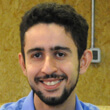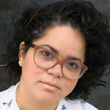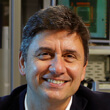Real time education
Facing a transformation that will erase the boundaries between the physical and the digital, the educational model in Brazil must innovate in order to meet the challenges of this new era.
January-March | 2017All countries, especially the emerging ones, such as Brazil, need to create solutions to a situation in which a significant part of the population is not able to work, and many companies cannot find qualified candidates for their vacancies. The discussions often go through subjects such as tax incentives and labor reform, but, in the face of a transformation of this order, which will erase the boundaries between the physical and the digital, there is a consensus that the education model should change and innovate to deliver a quality learning experience on a large scale and convince people to study throughout their lives.
“New technologies and competencies will be needed to meet the speed of change. The challenge is to learn how to learn.”
Luiz Fernando Barosa, Deloitte Human Capital Management director
“The digital environment requires a change in the perspective of the employee in relation to the skills and competencies necessary to act in the world”, says Luiz Fernando Barosa, Deloitte Human Capital Management director. “New technologies and competencies will be needed to meet the speed of change. The challenge is to learn how to learn.”
In certain situations, such as in training programs, businesses are already feeling the impacts. Barosa speaks in a “gap”, a recurring expression in the analysis of specialists, and sees the control in the hands of the professional, who is no longer dependent on internal programs to develop himself in matters that go beyond what he has learned in the university. “There is an anachronism between the companies’ training areas and the experience that employees have outside them, with knowledge offers available online”, he says. The director points out his analysis with data from the 2016 edition of the “Global Human Capital Trends” survey, carried out by Deloitte, which showed that only 8% of organizations believe they have a very effective learning delivery.

The search for qualification also rewards the pocket. According to the researcher of the Institute of Economic Research Foundation (FIPE), Eduardo Zylberstajn, to change the mentality of the employee and cause him to keep track of new knowledge is necessary to show that, in general, the cost is less than the benefit. “Even though there are careers or occupations that, in fact, do not require much study, as a rule, to progress in the career, it is necessary to accumulate knowledge, both general [cognitive and not cognitive] and specific.”
The study “Estimating the Returns to Education Using a Parametric Control Function Approach: Evidences for a Developing Country”, from Zylberstajn and André Portela Souza, economist at the Getulio Vargas Foundation (FGV), shows that, in 2013, one additional year of learning meant an increase of 11.4% in the Brazilian’s wage.
Back to basics
Changing attitudes, however, means to first look at what happens in basic education, one of the bottlenecks that drags Brazil to the 83th position in the human capital ranking produced by the World Economic Forum with 130 countries. It also implies to overcome problems such as those shown in the last PISA (Program for International Student Assessment), an exam of the Organization for Economic Cooperation and Development (OECD) held in more than 70 countries with 15 years old students. Compared to 2012, the scenario is of stagnation. Brazil remains below the average in science (401 points, compared to the average of 493 points), reading (407 points, compared to the average of 493 points) and mathematics (377 points, compared to the average of 490 points).
“If Brazil had to prioritize one of the three areas, I think that the challenge before other countries would be much greater in mathematics. OECD says that the level 2 (on a scale that goes up to 6) is the basic to be an active citizen, but the percentage of students with less than that in Brazil is more than 70%, and almost half of these are below. It is quite alarming”, says Ernesto Faria, project coordinator for the Lemann Foundation.

“In general, what we need to do is to ensure better conditions for students who have a greater need. The school in a vulnerable context needs to receive more resources and have better teachers. Chile, Finland and several communities in Belgium do this, while our public policies are made to match and compensate, not to offer more.”
Another recommendation of the representative of the Lemann Foundation is to raise the requirement of national examinations to reduce the discrepancy in exams such as PISA and identify excellence networks. “We must have high expectations and require more complex skills, which, later, students will need at the university and in the labor market.”
Chance for innovation
Change the way in how it is taught and learned also means opening up education to ideas coming from different areas – especially in the technology field. That is how the Center for Studies and Advanced Systems of Recife (CESAR) operates, an institution that develops production experience of digital content from the inclusion of programming and robotics lessons in the curricula of public schools. Together with these new activities, the discourse also changes: content copying from blackboard leaves and design techniques enters, causing the classroom to work as if it were a startup.

“As protagonists, students are involved in challenges in which they need to utilize the knowledge built in the classroom to recognize problems, prototype, test and validate solutions that, once published, contribute to the community in which they live”, says Juliana Araripe, CESAR’s educational analyst.
In its projects, the institution adopts for the solutions a participatory design centered on the user, through which customers become partners. In the Rural Schools Connected Program, from the Telefônica Vivo Foundation, CESAR acted as executor partner in providing connectivity in tablets and laptops to a rural area school of Vitória de Santo Antão, 50 km from the capital of Pernambuco. In addition to the devices, training for teachers to integrate technology with their practices in a transformable and sustainable manner is offered.
Pernambucoders, another initiative aimed at public education, was born from the partnership between CESAR, the Secretary of Education of Pernambuco, Porto Digital, the Federal Rural University of Pernambuco (UFRPE) and the Center of Excellence in Software Technology of Recife (Softex). “The goal is to have the students learn programming content from an early age, promoting skills and increasing the number of applicants for computer courses and, consequently, of professionals available to work and enterprise in ICT [Information and Communication Technologies] in the State of Pernambuco” says Juliana.
The project seeks, in addition to arouse the interest of the students for the career, develop logical thinking, concentration, creativity and ability to solve problems – abilities which, as PISA has shown, are more than urgent.
Directed teaching
The “detachment” between the reality of the student and education is a phenomenon that goes beyond the walls of the schools and also comes to the institutions of technical and higher education. In Santa Catarina, where he holds the position of regional director of the National Industrial Apprenticeship Service (Senai), Jefferson Gomes says it is a matter of concern the fact that, within four years, half of the industrial labor force will be comprised by individuals above 40 years of age. “This professional will be deeply outdated because of the digitalization speed. There is extensive work for the formation of young people and for the reformation of adults”, he describes.
Faced with this challenge, and in the midst of a crisis that hit the economy and overthrew the production, the Provisional Measure of Restructuring the Secondary Education came. Combined, the factors led the Senai of Santa Catarina to restructure the format of its courses. “Now, students build their curricula through credits and can learn in a classroom to program the party’s sampler and household appliances for greater energy efficiency. Instead of physics, they learn how to build a basic sanitation network.”
To satisfy those who seek to update and prefer to follow their own rhythm of studies, there was an expansion of the online content, also allowing the validation of credits. “The student can do this course in five years or in six months, depending on his time availability. If he is forced to do in two years, he will drop out. There’s no way. The world no longer allows a restricted teaching.”
The ideas put into practice in the technical education from Santa Catarina directly matches another project in which Gomes has served as a consultant, called Task Force of Advanced Manufacturing, which was led by the Federal Government and counted with the partnership of industry, research and promotion to innovation industries. After workshops in seven States, the work will now focus on the identification of capabilities and advanced manufacturing solutions that will be demanded in Brazil in the medium and long term.

This movement has also reached the Air Force Technological Institute (ITA) in São José dos Campos (SP), where Gomes is a professor in the division of Mechanical and Aeronautical Engineering. According to him, it is no longer possible to graduate a professional only on the technical side and oblivious to the problems and discussions that impact the world. “It’s worth nothing to teach mechanics separated from electronics and chemistry, nor from gender, sustainability, policy and regulatory issues.”

At the University of São Paulo (USP), the teacher of the Polytechnic School and coordinator of the Institute of Studies Brazil-Europe (IBE), Moacyr Martucci, bets on the synergy to “not need to reinvent the wheel”, even more in times of the crisis that dried up both the public and private capital flow for research. “We were watching what Europe is doing in research and they were watching what we have done here, in such a way as to have a synergy”, says Martucci, who puts the energy among the areas that most attract glances from partners.
Within this attitude of joining forces, another goal of the Institute is to look at what is happening within the university itself and “unbox” them from disciplines. When a theme is studied by different groups, this contributes for them to connect in order to avoid redundancy, streamline processes and encourage dialog within the academic community.
Initiatives are not lacking. And many, as it can be seen, are more dynamic and engaging for students than the worn traditional model. What still needs to be done is to extend the reach of these initiatives and make them accessible so that a much larger number of Brazilians, especially in public education, have the necessary tools to adapt to a changing world.

